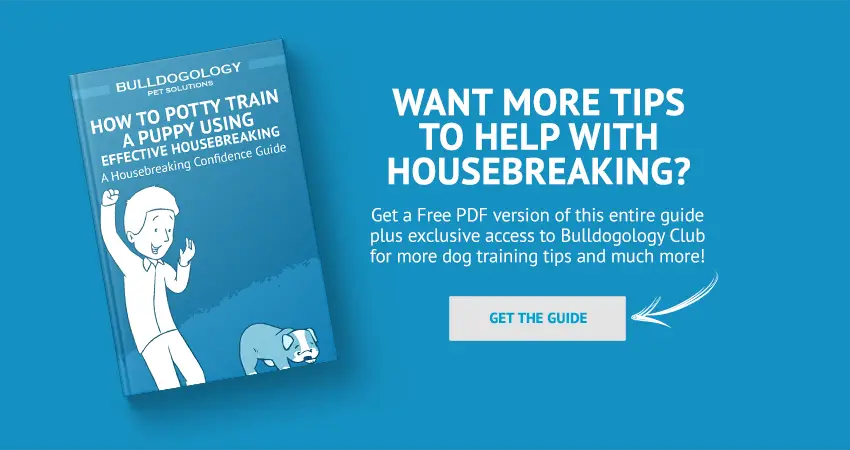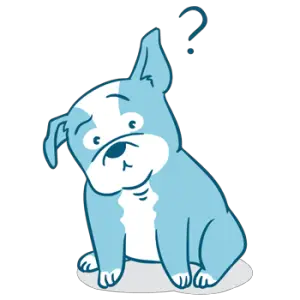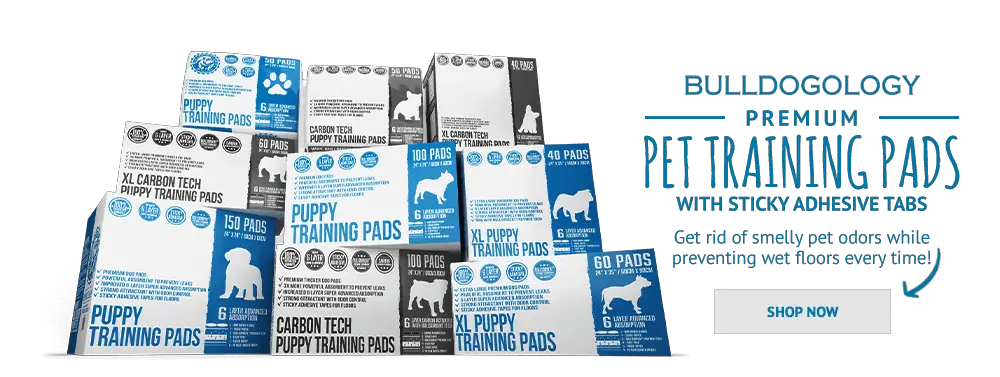How to Potty Train a Puppy Using Effective Housebreaking
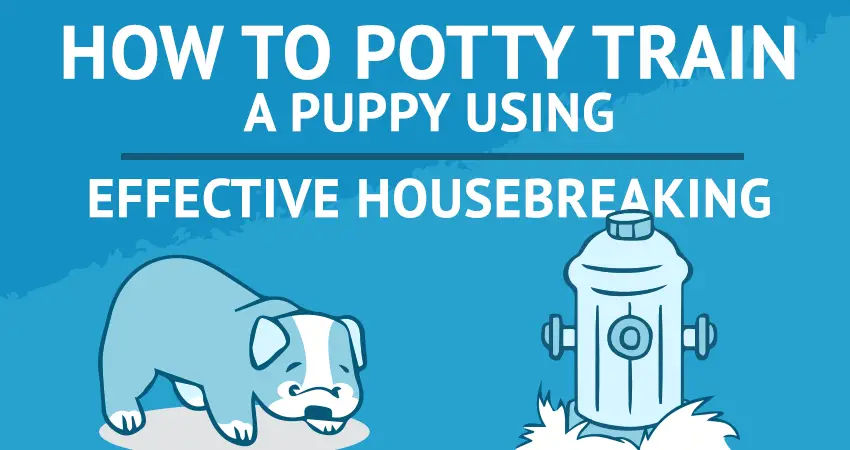
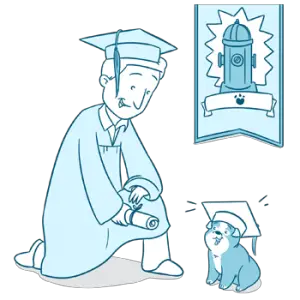
Once we brought a puppy home, we look forward to years full of love, fun, and affection, but nothing beats the first few days.
As we get to know our new puppy member, we expect stressful days along the way, and one of these is a lack of effective housebreaking where you discover unpleasant things. And this is where proper potty training is essential to potty training a puppy.
So how do you potty train a puppy?
A little sacrifice and dedication are needed on this matter to potty train and that the reason is simple: this is one of the things a puppy needs to learn as they get older. And it would be best to teach them first-hand.
Naturally, the mum teaches her pups where they are allowed to make a mess and where they are not. They will eventually learn through constant training and correction their mum makes.
Therefore, if you want your new puppy to be appropriately trained, you have to be consistent like a mum when training– you will be a fur mum.
This means you have to be dedicated and do things with love to avoid getting frustrated and making things difficult.
In this article, we have compiled all the things we think you should need to know about potty training your puppy through effective housebreaking.
So, take your puppy, and let’s get started!
Potty train a puppy will state from the bare minimum ABC’s of potty-training to the effective use of tools like treats and rewards, crates, puppy pads, and more. Everything you have to know in one comprehensive-effective housebreaking bible for puppies.
Free bonus: Download this housebreaking guide as a PDF. Easily save it on your computer for quick reference or print it for your puppy housebreaking training. Plus free access to Bulldogology Club!
Basics of Potty Training Puppy Guide
To begin training your puppy for effective potty train housebreaking, it is recommended to wait until the pup is eight (8) weeks old. It would be best to follow these keys to teach your puppy before starting formal training lessons:
- Be Patient. Each dog is unique and can only learn at its own pace. Some dogs learn quickly, and others take more time. Patience is indeed a virtue when it comes to effective housebreaking.
- Be Kind. This goes hand-in-paw with “Be patient.” Don’t lose your temper if your dog doesn’t “get it” right away, or appears to be ignoring you. Please do not punish your dog for not learning quickly enough. Don’t punish your dog at all. (We’ll be teaching you practical ways to stop or prevent inappropriate behavior—without punishment.)
- Be Flexible. If your dog is struggling to learn, be willing to change your training routine. The location may be too distracting, the time of day may be too close, or far from feeding time, the length of your training sessions for housebreaking may be too long or too short, the training exercises may need to be broken down into smaller and simpler steps. Always remember, each dog is unique. Be flexible and willing to do whatever you can to help your dog succeed.
- Be Generous. Being generous with your rewards and your time can make a difference between proper potty training and excellent training with effective housebreaking. Always reward your dog’s correct responses generously. A hard-work deserves a generous reward. And commit ample time to your training lessons. We’re all busy these days, quality time with your pup will make training lessons fun and effective. It is advisable to plot your schedule ahead of time.
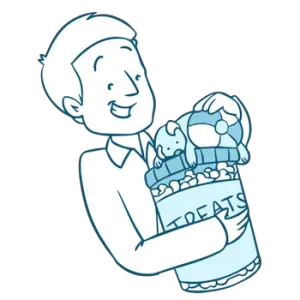 Using Rewards for Proper Training
Using Rewards for Proper Training
One of the biggest keys to success with potty train a puppy is rewarding your dog correctly along with positive reinforcement. This means training your puppy something they love at exactly the right moment.
It is considered one of the fastest paths to effective housebreaking when training your puppy. It would be best to figure out what kind of reward will best motivate your dog.
All dogs are unique individuals. Most dogs are motivated by food that tastes and smells good to them.
Food treats can be tiny, which is handy for keeping them in your pocket or a pouch to use during training—and it is vital to maintain your dog’s caloric intake to healthy levels.
Using treats is the form of reward we will be using throughout this training. Know what treats are suitable for your dog.
Strong- smelled meat and cheese treats are picked by many, but some are made primarily of other ingredients. It is possible for your dog not to appreciate artificial ingredients.
Small morsels of cooked chicken are a popular home-made treat. But keep in mind that what motivates other dogs may not motivate yours. It would be best to experiment and find out what your pup loves to eat.
Some dogs don’t like treats, and that’s where we need to turn our resourcefulness mode on. In this case, owners need to figure out something else that could motivate their dog.
A couple of pats on the head is a great reward, but it could not be for your dogs. A scratch on the belly is also an excellent idea, another unique form of petting that most owners have for their pups.
It is a matter of experimenting and finding what your little pup loves. Playing is also considered a reward such as tossing a ball, playing tug-of-war, or playfully chasing your dog for a few minutes; it could be your pup’s idea of heaven when training your puppy.
The Best Puppy Potty Training Reward
Training your puppy can recognize your reaction whenever you are happy, mainly when based on the voice tone. It is rewarding when we make someone happy or smile, and that’s the same for them, puppy needs the same attention.
Let your dog show you what they truly love. It is commonly noticed by their reaction to the reward you offer when you pay close attention to how they respond. But, just because they accept a piece of kibble doesn’t mean they love it.
Observe them when you are giving them a treat, petting, or playing with them. If they look or walk away, it could be they weren’t thrilled with what you offered, but if they get excited, stay close, and begs for more, it means they love it and are willing to work to get the reward.
For initial training, we highly recommend using a food treat as a reward while training your puppy. It’s the easiest to work with and gets the fastest result, but make sure your dog likes it!
After you figure out the form of reward, the second key to positive reinforcement and training your puppy is timing.
This is considered critical during early training; it would be best to immediately give the bonus after your dog gets the right action.
This means that within half-a-second, your response to their correct action must be clear and instant. Being stunned and amazed when your pup did something right from the training, and it’s normal.
Keep in mind giving the treat several seconds later after your puppy got it right. It would be best to get yourself ready to be overwhelmed anytime and to deliver instant gratification.
With consistency, you’ll be amazed at how quickly your pup learns to potty train.
Another important thing about timing: don’t make your training lessons too long. Like humans, dogs can become bored by repetition, and let’s take it from the old saying that goes, “Bored students don’t learn very well”.
To keep training your puppy productive, don’t make them outlast your dog’s attention span. Each dog is different, so you’ll need to be alert and notice when his attention starts wandering.
Try for a 10-minute session and see how that goes. Shorten it if necessary. Don’t lengthen it to more than 15 minutes. Repeating a short session two or three times a day is advisable rather than having one long session each day.
Free bonus: Download this housebreaking guide as a PDF. Easily save it on your computer for quick reference or print it for your puppy housebreak training. Plus free access to Bulldogology Club!
Primary and Secondary Reinforcements for Potty Training
The instant reward you and your dog choose will be your primary positive reinforcement for potty train a puppy. A primary reinforcer is something your dog inherently loves. In other words, they were born loving treats, tummy rubs, etc.
Another form of reward while training your puppy is a secondary reinforcer; this is something your dog must learn to love and be motivated by it. Praise is an excellent example.
Puppies are not born loving a phrase such as “Good girl!” After all, it’s just noise to them. They will learn to associate that noise with love later on.
A popular form of secondary positive reinforcement is clicker training; it is a handheld device that makes a distinctive clicking sound. That sound is a substitute for verbal praise.
When used correctly, your dog will learn to associate the clicking sound with love. We prefer using verbal praise versus a clicker, simply because your voice is something you’ll always have with you.
If you prefer to use a clicker, mentally substitute “click” when the lessons say verbal praise or “Good!”
Regardless of whether you use your voice or a clicker, the most effective way to train your dog is to use primary and secondary reinforcers that are consistent.
If you prefer using your voice instead of a clicker, it would be best to choose a phrase you are comfortable with, and using the same phrase consistently will help.
Dogs are dogs, and therefore words are considered noise to their ears.
They have no idea that “Good girl,” Great job,” Way to go Molly,” or other phrases all mean that they did something right. It would be best to use the same phrase your family members use.
Using your praise phrase several times a day is advisable when training your puppy, followed by a primary reinforcer immediately, such as their favorite treats.
Do about five repetitions, two or three times a day for two days. You can also use your praise phrase when rubbing their belly when they’re eating their dinner or doing something you think they love.
They will eventually learn to love secondary reinforcers when potty training, the praise phrase, and they will later have the eagerness to hear you say it.
Throughout the training course, we’ll use the example of “Good,” but substitute your own secondary reinforcement choice. Remember to use it—and only it—consistently.
During early potty train, the combination of primary and secondary positive reinforcement is considered extremely powerful and useful rather than using either form of motivation alone.
Treats are not needed forever, and therefore carrying treats around in your pocket will not last long. As your dog learns, obeying becomes a habit eventually, and using treats consistently, or other primary reinforcements are somehow not needed.
But, whenever teaching your pup something new, make sure to use them consistently. Using secondary positive reinforcement continually is always a good idea. It is a way of thanking your dog for doing what you asked, and of course, simple common courtesy is rewarding.
We can guide you on when to start decreasing the use of treats or other primary positive reinforcements later on. Now that you have the basic knowledge of rewards and timings let’s get the training started!
Effective Housebreaking Potty Training Breakthroughs
Effective potty train housebreaking is considered an essential element of a loving, lifelong relationship between you and your dog. If you don’t teach your new best friend not to pee and poop in your house, he won’t be your friend for long!
Fortunately, housetraining a puppy (or adult dog) to potty train isn’t complicated with positive reinforcement. All you have to do is prevent peeing and pooping in the house, and reward peeing and pooping while you take them outside.
While putting this simple concept into practice isn’t difficult, it does require your diligence, dedication, and patience. But the rewards are definitely worth the effort!
We’ll provide some general information about dogs on which our effective housebreaking techniques are based, explaining the benefits of puppy pads or crate training, and the step-by-step process for housebreaking your dog.
5 Facts Before Housebreaking
Here are five facts that can guide your potty train housebreaking:
Fact 1: Adult dogs can be housebroken the same as puppies when it comes to potty training.
If you adopt an adult dog, you may not have to worry about housebreaking if they have been adequately trained. It is unnatural for a dog to know that it is not right to go indoors, even the smartest one.
They must undergo training to understand as most adult dogs did, but we can’t assume right away.
Some adult dogs were kept outdoors, raised in a cage ever since they were pups, or were improperly trained by their previous owners. In this case, you will have to start fresh and do housebreaking using the same basic techniques for a puppy.
However, adult dogs don’t have to go or wee as often as puppies, which makes the training a lot easier. On the other hand, adult accidents can create bigger messes, so it would be best to prepare yourself.
Fact 2: Puppies have limited bladder & bowel control.
A puppy younger than 20 weeks old has to go once every hour when awake. A very young puppy, under 12 weeks old, will need to go more often than every 30 minutes to two hours or even more frequently.
For an older puppy, a general rule for potty training and determining the number of hours they can go without doing their dog litter is to take their age in months and add one.
Therefore, a four-month-old could hold for about five hours. For small breeds, they can’t keep it too long, but they can hold it a bit longer for large breeds. This is a general rule, and your puppy’s control may vary. When asleep, puppies can hold even longer than they can when awake.
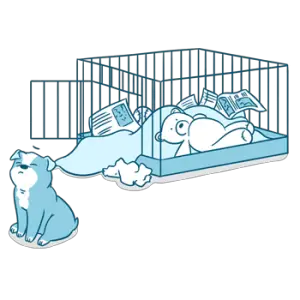 Fact 3: Dogs like to sleep in a clean area and not with dog litter.
Fact 3: Dogs like to sleep in a clean area and not with dog litter.
Just like humans, dogs prefer to sleep in a clean area. In the wild, canines such as wolves, coyotes, and foxes rest in a den and go outside to relieve themselves.
And through this, their pups learn to do the same thing because dogs will try their best not to soil their sleeping area.
A puppy is less likely to potty in a small-so-called den, and confining them in whenever you can’t keep an eye on them, can help avoid starting a bad habit of going anywhere and wee wherever they like.
Fact 4: Dogs do best when kept to a routine schedule with potty training.
Feeding your dog at a regular time will help to potty on a regular schedule.
Letting your pup eat and drink whenever they want can give you a hard time knowing when he needs to go out. Taking them out on a regular schedule is also advisable.
Fact 5: Punishing a dog after he has an accident in the house is pointless and may do more harm than good.
Your dog will not understand that you are upset about something that happened in the past—even if it was just a minute or two ago.
This could cause trauma to a pup and might have a hard time figuring out what the punishment was. And for this, they might get the wrong message far from what you want them to perceive.
Your Dog Common Scents
A dog’s sense of smell is strong, and therefore they rely on the scent to look for their ‘toilet’. They can recognize the same spot where they have gone potty before through scents, and by this unique smell, it gives your dog a hard time to resist as it is a sort of sign that says it is their ‘toilet’.
It would be best to make sure there is no odor of urine or feces before starting to potty training a new pup.
What can I put on my carpet to stop my dog from peeing on it?
Using vinegar or ammonia as cleaning solutions is not advisable as these scents are close to the urine smell. Using baking soda, club soda, or purchasing special odor-eliminating cleaners from a pet store is better.
When cleaning up the past mistakes your dog did you want to learn how to stop dog from peeing in same spot. Try marking the rooms with the smell of you and other family members can help your pup resist going potty in that area and not in the same area.
And this is why an untrained dog that can’t go outside often runs to a rarely used area of the house to go.
If your dog ends up staining and peeing the couch cushion here are some useful tips on how to get dog pee out of the couch.
Once the scent wee and poop have removed, it would be best to spend time in every room with your dog, especially the places that are used rarely.
Playing and sitting on the floor with your dog for several minutes in each room for a couple of days, and soon enough, the room will be left with a scent that can give them a sign that it’s not a potty zone for dog litter.
It might take a lot of effort to mark every area in your house this way. This method is more of a passive deterrent rather than a foolproof method to prevent your dog from going potty inside. On a side note, the action is needed, especially for a puppy. However, if all else fails and your dog continues to pee on the carpet here are some helpful tips on how to get dog pee out of carpet.
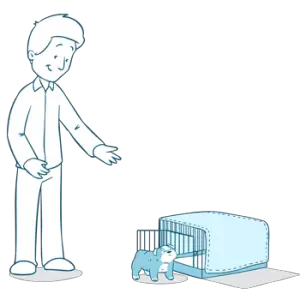 How to Crate Train Your Puppy
How to Crate Train Your Puppy
Take your puppy and let them have the privilege to run free around the house can sometimes bring disadvantages, and one of them is going potty anywhere and whenever they want.
Keeping an eye on them at all times to prevent them from pottying anywhere can be quite impossible.
Instead, it would be best to train them up for success instead of failure by using puppy pads or start crate training with positive reinforcement.
Remember Fact 3 in Potty Training: Dogs Like to Sleep in a Clean Area–by confining a pup to a “den,” this, can help them from peeing or pooping since they want to keep their own space clean.
Also, doing this, helps you to predict when they need to go accurately. It usually happens the moment they are released from their crate.
Creating a cozy den for your pup out of a dog crate is recommended, and therefore picking out the best dog crate for your puppy is essential, especially when it comes to the crate size that it is big enough for them to stand, turn around, and lie comfortably. But not too big that gives them a space to make it as their toilet.
Line the crate with a towel that you’ve used, or a shirt that you’ve worn, so your scent is present.
It would be best to make the crate comfortable for your pup by placing the crate in a quiet area away from distractions, not too close to a window or in a high-traffic area of your house, and not away from the pack and your family.
Praising Your Dog Every Effort
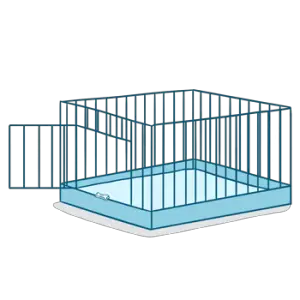
Take your puppy and praise your dog when they go in the crate, and if they won’t, put some treats on the crate entrance.
Gradually move the treats farther in until they go all the way to get them. Don’t close the door yet, and let them go in and out as they please.
Putting treats on the crate entrance can help and make it a fun game by tossing treats going in few times in a row–off and on throughout the day.
Say “crate” whenever you want them inside, and praise them when they do.
After you think they are comfortable with the crate, and eagerly runs in to get the treats, close the door for a second after they go in; open it and let them out. Doing this a few times is advisable.
Close the door and leave it that way as you feed them few treats through the crate bar spaces and let them out. The next step is to stuff a hollow chew toy with something delicious.
Let your puppy sniff the stuffed chew toy and place it in the crate. Close the door with your puppy on the outside for them to beg you to open the door to let them in which usually takes a few seconds.
Use positive reinforcement and praise them for going in by saying “crate.” Once they get caught up licking the chew toy, slowly walk away and return before they finish enjoying it. Open the door and don’t let them take the chew toy outside of the crate, if they do, take it from them.
The next step is to tie the freshly stuffed chewing toy in the crate and leave it open. They either want themselves in or stay outside of the crate.
But, most pups prefer to be in for the chewing toy. This could make them fall asleep inside when finished, and you can then slowly close the door.
Using Crate Naps When Your Puppy Get Sleepy
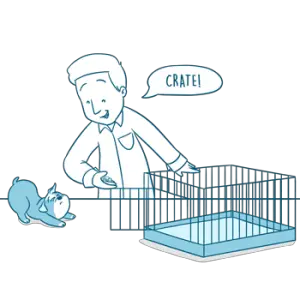 When a puppy is sleepy, putting them in the crate can help. Encourage them to go in with treats by saying “crate” when you think they’re about to fall asleep. You can then close the door after they go in.
When a puppy is sleepy, putting them in the crate can help. Encourage them to go in with treats by saying “crate” when you think they’re about to fall asleep. You can then close the door after they go in.
If you found them already asleep, slowly pick them up and carry them as gently as you can; don’t forget to close the door.
With pre-conditioning, some puppies quickly accept being confined in their crate at night, but some will whine and bark for you to let them out.
Putting a cover over the crate will help them settle down and fall asleep. But mind the temperature that it’s not too hot or too cold.
It would be best to ignore their whining and barking for you to let them out. Otherwise, they will get the wrong message that it is the key to getting themselves out of the crate, which is a bad idea.
After a few minutes, pups will settle down and go to sleep. However, if they start whining after being quiet for a while, they may need to go.
They should be taken outside, but don’t let them out when crying. Please wait for a little while for them to pause from whining, and quickly open the door.
Making some noise that can make them stop whining is advisable when they don’t pause. Immediately take them out before they start making noise again.
Using the crate at night and during the day whenever you can’t keep an eye on your puppy or have them outside. Using the crate as punishment is not advisable.
Scolding your puppy and locking them in the crate is not a good idea. They could associate the crate with punishment. We want them to think their crate as a comfortable den, and not a jail cell.
By following these helpful steps, your pup will consider the crate to be their safe-cozy den after a few days and happily do so.
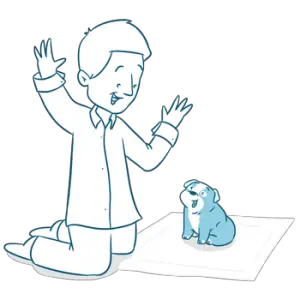 How to Train Your Puppy to Use Puppy Pads
How to Train Your Puppy to Use Puppy Pads
Using the best pet training pads is a great way for potty training. Puppy pee pads are also called dog pee pads.
Using this along with the playpen idea mentioned in this article, they can allow you to eventually let go of the playpen and let your puppy roam around the house while you are away without having accidents all over the place. In case it happens, we got the best tips for how to get old dog urine smell out of carpet.
This option is great for all dogs to go in one area while you’re gone. Choose a suitable area inside your home where you can place the puppy pad.
When your pet starts to show signs that it needs to go, take them where the puppy pad is and encourage them by using commands such as “go pee!” and “good boy!”.
If your puppy had gone potty in a different area in the house, lead your pup back to the pad–repetition is the key.
Once the pad is fully absorbed, pick the pad up by holding the four corners to conceal it, and then carefully throw the pad away. Make sure to wash your hands after. If you’re looking for the best, here’s a helpful guide to what you should be looking for when you’re looking for the best puppy pads to buy.
When your puppy gets comfortable using training regularly, start moving the pad outside to get them used to go outside.
Do not punish your pet for accidents – this can be very frightening for them and give you huge setbacks in training the pup. A gentle voice with positive encouragement will go a long way. These are excellent ideas as you can get rid of the crate method later on.
Since the puppy has learned how to do their business on the puppy pad, they will keep this in mind, whether they are in the house. You can take them out of the crate and let the puppy have a bit more freedom while you are gone.
Simply leave the pad on a corner that’s acceptable for them, and they will relieve themselves there rather than all over the house.
Get more quick and easy tips on how to potty train a puppy here!
Successful potty training is all about timing. The goal is to have your puppy in the right place (outside) at the right time (when they need to go) and avoid having them in the wrong place (inside) at the wrong time (when they need to go). This can be easier when you’re able to predict when your puppy needs to go.
Keep in mind the Fact 2: Puppies Have Limited Bladder & Bowel Control. Usually, puppies need to pee right after waking up from a nap and poop within a couple of minutes.
Rewarding your puppy For doing a good job is another critical element of timing; we have covered this in our Training With Basics. Your puppy goes potty when and where you prefer, your immediate and lavish rewards (praise and yummy treats) can teach them to repeat this correct behavior.
A dog that is not housebroken should be restricted to one of these three situations at all times:
- Under your constant and attentive supervision.
- Outside with you.
- Confined inside the crate/den.
Situation 3 is where your puppy should spend most of the time during the housebreaking process. Did you notice that we did NOT include a situation where you leave your dog outside all the time?
Many people mistakenly think that puppies kept outside will be less trouble—after all, they won’t be peeing and pooping in your house, and they won’t need your constant supervision, right?
But here is the reality: puppies left outdoors and unsupervised for long periods seldom become housebroken. They tend to bark, chew, dig, and escape from your yard.
How to Teach Your Puppy to Go Potty Outdoor
Outdoor puppies also become so excited on the rare occasions when they are allowed indoors (excited puppies tend to pee without warning).
Here’s how to take them outside and potty training your four-legged friend outside:
- Determine where you want your dog to go. It’s best to pick a doggy toilet area that’s relatively close to the door, so you and your dog don’t have to go too far to go. Give the location some thought, because after they’re trained, your dog will continue to use this place as a toilet. This is convenient for clean-up time, especially if you have a large yard—and your family won’t have to be wary of little “landmines” when playing outside in the non-doggy- toilet areas.
- Know when your puppy has to go. Until your puppy is trained to give you signs, which eventually will happen sooner or later, when they need to go, you have to be familiar at deducing this. Sometimes a puppy will need to go with a minute interval within 5-8 minutes. And therefore, it is best to wait for a few more minutes until they are finished.
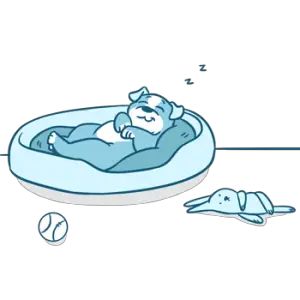 Here’s when you should take them outside:
Here’s when you should take them outside:
- Immediately first thing in the morning.
- After letting them out of the crate/den.
- Every 30 to 60 minutes while they’re awake, based on the age (see Fact 2).
- After eating or drinking.
- When doing something for a while (like chewing on a toy), and then gets up and starts looking around.
- Starts sniffing the floor.
- When going to an area where they’ve gone potty before.
- Running around and excited more than usual.
- When looking at or wandering near the door.
- When pacing, whining, or starts to squat (duh!).
Note: Male puppies squat to pee just like female puppies (versus lifting a leg) until they are 4-9 months old. Keep your puppy under your constant and attentive supervision, or confined in a crate, when indoors.
It only takes a couple of seconds for a puppy to squat and pee, so you must watch them closely. Don’t stare at them, it’ll make them nervous, but keep an eye when they’re out of their crate.
This will be easier if you limit their movements by keeping them on a leash or restricting them to one or two rooms.
Don’t think you can watch TV, wash the dishes, or do something else and keep an eye on your pet at the same time. If you become distracted or preoccupied, accidents could happen, which might make housebreaking longer, and a difficult task.
When Messy Accidents Happens
It’s your responsibility to take your pet outside when they need to go. Accidents happen, and it will never be anyone’s fault– hence it’s called ‘accident’.
Take your dog to a designated toilet area every hour or whenever they need to go (see Step 2), whichever is less, and teach them to go on command.
It would be best to fill your pocket with treats every hour to avoid forgetting to give them treat. After releasing your puppy from their crate, take them straight to the designated toilet area.
Encourage them to go quickly by calling “outside, outside, outside” enthusiastically. Taking your time isn’t recommended as they might pee or poop en route out of excitement.
Making them hurry is also a good idea to jiggle their bowels and bladder, so the moment they are in the toilet area, they go right away. Taking your dog out every hour as possible even if they are old enough to hold longer is also a good idea.
Leading Your Pup to The Correct Place
Use a leash while potty training, even if you have a fenced yard, To lead them to the correct place. This will also get them used to go while on the leash. Stand quietly, don’t stare at them, and wait until they start.
If they stare at you instead of doing their business, they smell the treats in your pocket, look away and pretend to ignore them. Eventually, they started sniffing and prepared to go.
When they start to go, say “go potty” quietly, so you don’t startle them.
Choosing another cue that you are comfortable speaking in public is a good idea, and it would be best if the other family members use this word/phrase whenever pottying.
Once they had finished, give them a generous amount of tasty treats and lots of enthusiastic praise immediately–lavish rewards mean quicker results.
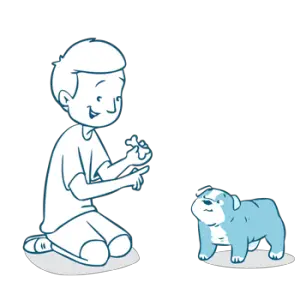
These steps are essential for potty training. If you only open the door and let them out by themselves to go and reward them when they come back in, the housebreaking will take longer.
Your dog would think the reward was because of coming back in rather than going potty, and you will miss the opportunity to train them to go on command.
It is advisable to spend time playing, training, and taking your puppy for a nice walk when they’re old enough.
Taking them outside to potty and ignoring them after you quickly bring them in could make them think that fun ends after potty training.
Consequently, they may become reluctant to go when they are outside and end up going in when they can no longer hold it.
Praising your puppy for going potty and taking them for a walk as an extra reward for a job well done is a good idea. This additional reward will encourage them to go more quickly.
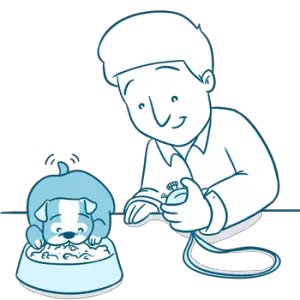 What If They Don’t Go Potty When You Take Them Outside?
What If They Don’t Go Potty When You Take Them Outside?
If your puppy enjoys the great outdoors but doesn’t go within a few minutes, take them back in, put them back in the crate and try again in 10 minutes. If they only potty and have a hard time doing so in the Winter use these 4 tips on how to potty train a puppy in the winter.
Repeat the process until they go. Your puppy will learn that they need to go when they are taken outside, or they will be taken back in the crate again–no potty, no freedom.
Eventually, they will go in the appropriate place at the appropriate time and for you to be able to give the appropriate rewards.
Controlling your puppy’s intake is also a good idea to know when they need to go by their age and size. Feeding your pet on a set schedule can help them potty on a regular schedule.
A puppy needs to go around 30 minutes after eating or drinking. Allowing them to eat whenever they want is not a good thing as it is unlikely to know when they need to go out.
Feeding them at the same time each day is highly recommended, and a puppy younger than three months should be fed three times a day although, older ones can be fed twice a day.
Handling Inevitable Accidents
Accidents can be avoided by following the given steps, but that doesn’t mean it won’t happen. When an accident happens, don’t get upset.
Instead, try to determine why it happened. There could be several reasons, such as getting distracted when keeping an eye on your pup, forgetting to take them outright in time, etc.
Despite what many people believe, dogs do not get pee or poop intentionally because they are angry, lonely, or want to “get back at you” for something. Dogs don’t think of pee or poop as something “nasty” to be used out of spite.
And the so-called look of “guilt” or cowering in “shame” when you scold them is actually your dog’s way of showing appeasement and submitting to your obvious anger. If you do not catch your puppy in the act, do nothing (except clean it up).
Do not—repeat—do not rub his nose in it, hit, yell, shake, or punish them in any way. Dogs don’t think about the time the way humans do. Your dog will not understand that you are upset about something that happened in the past—even if it was just a minute or two ago.
What If You Do Catch Him in The Act?
If you catch your dog squatting and about to go inside the house, make a sudden, surprising sound—such as slapping the wall—not to scare him, but to get the attention to momentarily stops what they’re doing.
Encourage your puppy to run outside with you. “Outside, outside, outside!” And finally, reward your puppy lavishly for going potty in the right place.
In any case, be sure to clean up all accidents quickly and thoroughly. You must eliminate any lingering scent, so it doesn’t invite your puppy back for a repeat performance.
How Long Before He’s Housebroken?
When can you safely start leaving your puppy or dog alone in the house for a while? It depends on many things, including the age, size, and most importantly, the owner’s diligence in training them.
In general, following these potty training guidelines should be making good progress within two months on your pet.
But some dogs learn quickly while others take more time. Gradually increase the amount of time you allow your puppy to be indoors, out of the crate, and monitor the progress.
Adult dogs generally need to go out at least once every four hours—first thing in the morning, around midday, late in the afternoon, and before going to sleep.
Hiring a pet sitter is advisable when you think you can’t get home on time to let your puppy out often enough. Accidents and setbacks are normal. It would be best to continue following the above steps and the best key to success: patience.
Be Alert for Special Potty Training Circumstances
There are a few reasons why it might be particularly challenging to housebreak a dog.
Dogs who were raised in puppy mills or pet stores, or who were regularly confined without the opportunity to go away from their sleeping area, might take longer to housebreak and require more patience and understanding from the owner.
Sudden changes in dog food brands or overindulgence in treats or table scraps can cause diarrhea. There may be physical reasons, such as a urinary infection. Be sure to get your dog checked thoroughly by your vet.
Advanced Housebreaking Potty Training Tips
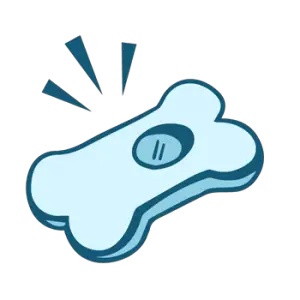
As a dog owner, you should be familiar with the clicker. A clicker is a great tool not just for house training when potty train a puppy, but also for all manners of obedience training.
It is a small-sized object that you hold in your hand to make a sharp clicking or cracking sound.
Here are some tips to help you learn how to use this tool properly:
Using a clicker with a food treat is mandatory. Press it to make a single click and, at the same time giving your pet a food treat.
Clicking alone without a treat is not enough and can disappoint you when they can’t figure out what the click is for.
When it comes to house training, consistency is vital.
Using a clicker lets them know which action is being rewarded, such as pressing the clicker with a treat when they go in the designated area. They will eventually know which act is being rewarded.
Here are a few examples of when to reward your puppy using a clicker:
-
- When they look at you every time you call their name. This is a reward for recognizing their name. It makes it easier for you to call them.
- When sitting when you say “sit”. Sometimes pups can be rowdy, and their breathing may not be able to handle all the activity. You can then teach them to sit down and relax.
- Teaching them to get “down”. Clicking should be done at the precise moment their elbows hit the floor. This is another rest exercise for your pup.
- Dropping or giving an item that is in their mouth. This can even save them from distress when something is in the mouth that could choke them. It also saves you from distress when your favorite shoe is in your pet’s mouth.
- Entering the crate. The use of a crate can also help them relax, and it also helps with house training.
- When stops whining or barking. This is the sort of behavior that must be discouraged. The best way to do that is not through punishment, but by rewarding the pup the moment they stop doing it.
- When they use puppy pads. Right when they use it to potty, click and reward them for proper housebreaking.
Using the clicker is not permanent. Gradually eliminate the use of it by reducing 10% of the time you click whenever your pet has done something right until it increases to 15% and so on.
Sooner or later, they go in the designated area to keep you happy and used to it. It has now become a habit and does without a clicker and treat. The clicker is also another signal of affections. It is like their favorite treat you gave when they did something right.
Clicker emphasizes what behavior is being rewarded. It allows them to focus on the particular activity that you want to be rewarded and reinforced.
Use Positive Reinforcement
Dogs are susceptible to human emotions. Shouting at your puppy is strongly discouraged. It can be quite traumatic, especially for a little pup. It only teaches them to fear you and nothing else.
Know that soiling and peeing are natural body functions, and they are not ought to associate any negative emotions with natural functions. Take the time to calm yourself instead of getting angry and, instead of shouting, speak assertively.
Through this, every time it will help them recognize that you are the authority in the pack and learn to respect your rank.
Since you have shown your pup that you don’t like the mess, it would be best to clean it up and bring your pup to your chosen relieving area. Right there and there, allow your pup to pee or defecate.
Don’t forget to give praise when they do–giving your puppy a treat to reinforce the idea that relieving themselves in a specific place is the right thing to do.
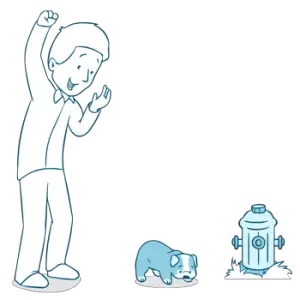 Housebreaking is Just a Matter of Routine
Housebreaking is Just a Matter of Routine
The first thing is first, observe your puppy. During the time you potty train a puppy, figure out how long it takes to digest the food and drink before they are ready to relieve themselves.
When you have used a crate, it’s easy to know when they want to out when they paw around, sniff the ground, whine, and turn around a few times as if looking for something.
If these behaviors are present, take your pup out to the relieving area to potty.
For a false alarm case, you can take them back in the crate to help them remember that going out means pottying when it’s crate time.
Puppies quickly catch on to the routine one way or another by being consistent and patient with the way you treat your pup.
Every successful trip outside should be celebrated by praising your dog, patting, and playing. And of course, the treat.
Other than peeing and pooping time after meal hours, note that some puppies need to go every hour or every two hours. Well, that will be the case for younger pups. Older pups can hold on to it a lot longer and tend to be more disciplined later on.
Watch Your Energy Levels
A stressed pup can also be tough to train and control. Cesar Milan, also known as the Dog Whisperer, said that dogs are also sensitive to their owner’s energy levels.
They sense when you are in a rush, nervous, and being impatient. This means you have to be mindful of your voice tone when giving commands.
Cesar says that a squeaky tone or even a loud tone of voice can stress your puppy and make housebreaking a lot more complicated than it should be.
Make Your Pup Feel Safe and Loved
A stressed pup will be challenging to train. It’s important to make sure every time they feel safe in the environment, loved and cared for by the family. This can strengthen the bond between you and your pup.
That is why the first chapter of this book dealt with puppy-proofing your home. The safer your home feels for your puppy, the better and easier it will be to train them.
The 6 Time Rule
On average, your pup needs to relieve itself at least 6 times each day. That’s the average number of trips to the relieving area that you might have to make. It takes patience, but it is beneficial for you and your dog in the long run.
You can count each day how many times you have taken your pup outside, that way you can time each trip and estimate just how many trips you still need to make.
Chewing and Uncontrolled Peeing
Pups chew anything and therefore keeping important things away from their reach is necessary. Paying attention to their energy level is advisable when starting your day.
Most people show a lot of affection when they see their puppy and could be a hindrance when housebreaking them. This is not what its mom would do when raising the pup. The mummy would show calm of assertiveness, and you should too.
It is best to show affection to your pup after some exercises, and a shred of discipline has shown. Showing excitement first thing in the morning could encourage your pup to wet themselves excitedly.
There could also be a medical issue at hand when your pup peep uncontrollably. If the tip above doesn’t work, it is advisable to take them to the vet to rule out any possible illness.
Conclusion
If you’re housebreaking and potty train a puppy, remember they don’t know anything yet, and for an adult dog, there may be some old habits to “unlearn” first.
Be patient, be consistent, and be encouraging. A few weeks of dedicated effort will result in a lifetime of clean floors and a beautiful relationship with your dog. If you’re looking for a more in-depth puppy training guide checkout our huge guide of 127 dog training tips on how to train a puppy.
A Cleaner Home Without The Hassle
We know that the process of housebreaking can be stressful for both of you and your furry friend. That’s why we designed the Bulldogology Premium Pet Training Pads to help pet owners like you potty train their pets without any hassle. It’s the best way to ensure that your pet is comfortable and squeaky clean…even when you’re not at home.
Now with Bullsorbent Polymer Technology
- Absorbs and turns liquid into gel right away keeping your floors dry all day long.
- With sticky adhesive tapes to keep your pet from making a huge mess.
- With built-in attractant to help potty train your dog when you’re not around.
- Perfect for indoor and outdoor use, use it as food and water mats, for kennels, or even when traveling.
- Instantly eliminates the stinky smell to keep your home fresh and clean.

